Intro
[FRENCH NARRATOR]
“Enjoy your last intermission… Ever.”
(The CITIZENS OF BIKINI BOTTOM brace themselves for what lies ahead. With the cut-off of the final chord, we crash to black.)
(During Intermission, the Doomsday Clock will keep ticking.)
A sense of impending doom looms over the characters in Bikini Bottom. As volcanic eruptions echo from far away, flashing red lights wash over the audience, blended music swells in crescendos throughout the auditorium and boulders crash onto the stage.
Brought to life by over 30 actors and 50 crew members, Jefferson’s rendition of “The SpongeBob Musical” brings our familiar childhood characters to life, only now, they must race against time to prevent a catastrophic volcanic eruption.
The end result?
An exhilarating performance of wholehearted friendship, community, and betrayal, leaving a lasting impression long after the curtains close.
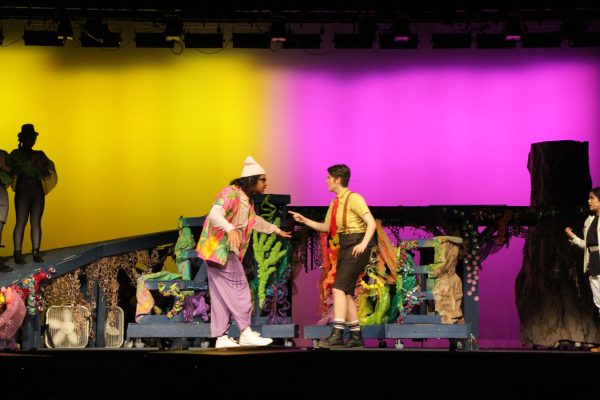
Set
Underneath the vibrant set of “The SpongeBob Musical” lies a serviceable secret that creates beautiful barnacles and helps conserve our oceans. Following the lead of Jefferson’s previous musicals, the set designers upcycled pieces of trash into stunning, nature-inspired set pieces. These methods not only allow the theater department to remain environmentally sustainable, but also contribute to its cost-saving efforts.
“A lot of our set decoration is built around trash. [We] take cans and mutilate them until they resemble barnacles and flowers and so on and so forth,” senior and Set Head Designer Sri Vellakkat said. “We go on ‘trash runs’ where we get all the trash from around the school with a big dumpster, and everybody gets their hands all in.”
The set pieces were crafted with contrasting elements of fluidity or rigidity, strategically designed to either blend seamlessly with the backdrop of Bikini Bottom, or stand out to amplify its threatening presence.
“You have the fluidity in Bikini Bottom, and you have this very boxy, rigid, terrifying and tall volcano that demonstrates the opposite of freedom and fun of SpongeBob. It’s almost like, ‘How do we get that contrast in here?’” Vellakkat said.
The actors climbing the rotating volcano columns are challenged to keep up with the pace of the movement, while also staying in character. It takes guts and strength to climb on-stage without toppling down the intimidating giant.
“Even though I was kind of uneasy at first, I began to trust my peers who were helping [me climb], and I pushed through,” freshman Mahdea Eshal, who played Sandy, said.
Sound and Light
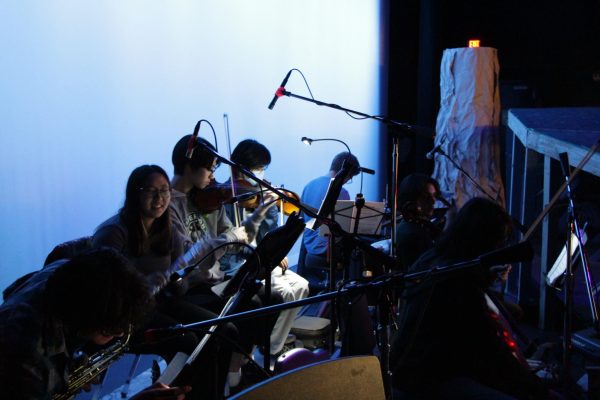
To create the unique variations of music and sound effects, the Sound Department opened auditions for live musicians to play in the musical. Behind the set lies a pit of six musicians stationed just offstage, where music from violins, cellos, flutes, saxophones, and keyboards are simultaneously blended with digital instruments.
“[We have] live instruments that are being paired with a bunch of digital instruments that are being synced in real-time and blended with an immersive audio pit. We’re doing a lot of blending of technology, as well as more traditional techniques, to try to build [the] most immersive underwater experience of a show,” junior and Sound Head Charles Bucher said.
This live audio is then fed through 16 speakers, which are strategically placed around the auditorium to pull the audience into the setting of the sea, creating the most immersive experience possible.
“We’re using a bunch of old bookshelf speakers that you could get for free around places. [We place them into] a cohesive 360-degree sphere of sound where we can put an audio object anywhere we want in the physical 3D space,” Bucher said.
Synchronized with the music, the Lighting Department programmed 555 lighting cues to amplify the emotions and meaning behind each scene and song–over 200 more than they’ve ever had before. Through an array of colors and effects, the lighting intensified the emotions portrayed within each scene.
“We used intensity of both color and general illumination to keep setting consistent throughout emotional beats. In ‘Chop To The Top’ and ‘Plankton Loves Karen’/’Big Guy’, static color palettes allowed us to keep the scene focused and together,” Lighting Head Designer Ash Kelley said. “However, moments such as the first volcano rotation, where SpongeBob loses Sandy while climbing, were highlighted with flickery intensity effects, keeping a feeling of nervousness and danger constant.”
However, ambitious lighting plans also come with heavy maintenance and continuous refocusing.
“The other part of having our lights work is making sure that they all function properly, [like] regularly changing the lightbulbs in incandescent fixtures to make sure they don’t burn out or leak metal acids, reprogramming and recalibrating LED fixtures, and patching in additional controls for newly hung lights,” Kelley said. “All of our lighting designers got to improve [these skills] over the course of the show.”
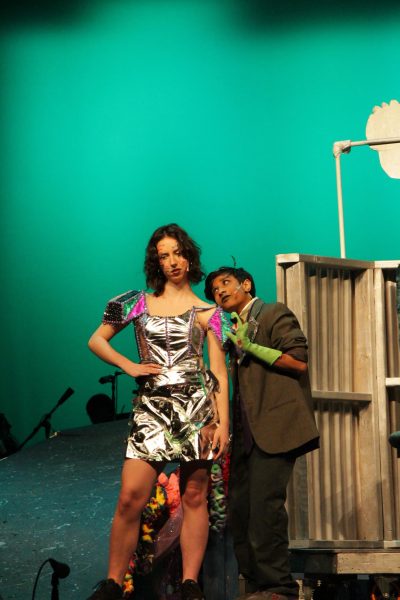
Costumes and Makeup
A sponge, genius squirrel, bright pink seastar and underwater robot fit right in with the unusual charm of Bikini Bottom, and so must this cast. Achieving the look of the 2-D characters from the television series while fusing elements from the Broadway musical creates a whimsical sight, but presents a challenging process.
“We were looking a lot at how things were done on Broadway versus how they adopted it from the Nickelodeon show. We thought about what makes those elements in a cartoon so big and flashy, and [the best way] to recreate that on a human face,” sophomore and Head Hair and Makeup Designer Bella Pachon said. “With their hair, we’re trying to do a lot of cool colors and a lot of big shapes.”
However, the makeup artists faced limits in their creativity, with some actors having to take on multiple roles.
“[We also] had to make the makeup adaptive. With Mr. Krabs, I wanted to do something really extreme with the contouring to make the defined zigzaggy nose, but I also needed to make that [adaptable] if he’s playing a different role,” Pachon said.
Similar to the set, the designers used recycled materials to create dazzling aquatic costumes.
“We experimented a lot with decorations and recycled materials. We wanted our ensemble to be bright and lively, so we used a lot of brightly-colored pom poms, bottle caps, and soda pop cans. We also put fishing nets on the characters to tie them back to the ocean,” senior and Costumes Head Designer Mayuka Valluri said.
A particular love-struck robot, Karen, wore a sparkling sharp-cut costume with green liquid flowing throughout it. Valluri incorporated her engineering knowledge to code parts of Karen’s costume.
“[For Karen’s costume] I painted the bottom egg shell cartons in black and painted white letters on top. I also wanted to incorporate a mechanical movement into it,” Valluri said. “I got a water pump, colored water with food coloring, plugged in an arduino and programmed it to pump the water in intervals to make it look like bits of loading code.”
Meaning
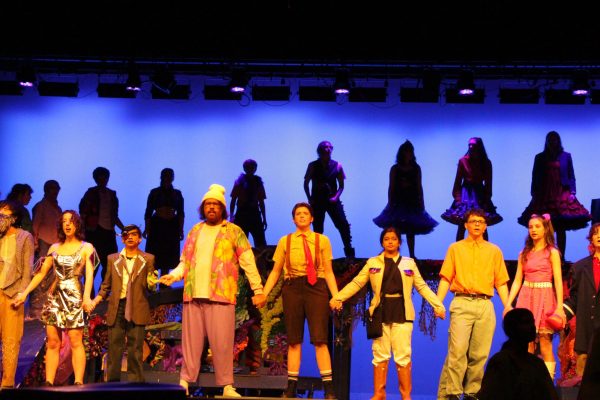
At first glance, one might laugh upon hearing about “The SpongeBob Musical.” After all, how meaningful can a story about an underwater sponge really be? But at the core of the storyline is a community of characters searching for meaning and identity– a story that strikes a resonant chord with Jefferson students– and one that contains themes of love, community, and even racism.
“SpongeBob has this internal struggle of ‘what’s my thing? What am I good at? Patrick is the brawn, and Sandy’s the brains, and what am I?’ Throughout the whole play, he’s kind of trying to figure out what that is,” theater director and teacher Kylie Murray said. “That internal struggle of ‘what’s my thing?’ I think, the [Jefferson] audience will really relate to.”
SpongeBob’s journey of finding meaning is captured through the heartfelt lyrics of the musical numbers. In “Just a Simple Sponge,” SpongeBob confronts the expectations and labels that others put on him, pushing back on the limits that constrict him.
“[In the song], the crabs are saying, ‘Oh, you’re just a simple sponge. You can’t do anything except be a fry cook.’ And [SpongeBob] is like, ‘I’m so much more than that. I’m not just a simple sponge, but I don’t know what it is yet,’” Murray said.
In parallel, Sandy, the brilliant scientist squirrel, faces her own set of challenges of racism and prejudice due to her status as a land mammal. Despite her intelligence and capabilities, Sandy receives blame and disrespect from her peers, leaving her ostracized in the very society she yearns to save. Her struggle of racism was not included in the Nickelodeon Shows, but was an addition in the Broadway renditions–something that Murray wanted to keep to add further depth and relevance to the production– reflecting a greater narrative of discrimination.
“While the Bikini Bottom community struggles to face their end, a faction of citizens looks to blame someone for the impending doom. Sandy is a land mammal and a female scientist, all of which make her an easy target for blame. This subplot holds a mirror up to society, something that is important to me in all the work I direct,” Murray said. “[The storylines] reveals how absurd it is to blindly blame people in marginalized groups for the shortcomings of a community.”
Despite the characters’ initial constraints and prejudices against one another, they unite into a loving community at the conclusion of the show. A greater narrative emerges out of this conclusion, showing that positive change and growth can emerge in individuals, relationships, and society as a whole.
“There is this very poignant moment where these groups who have been at each other the whole time, kind of come together in this moment of love and togetherness, and grapple with the idea of, ‘this is our last moment together, [so] let’s not fight anymore. Let’s just appreciate the beauty of the world around us,’” Murray said. “It’s a very sweet, poignant, and joyful feel.”




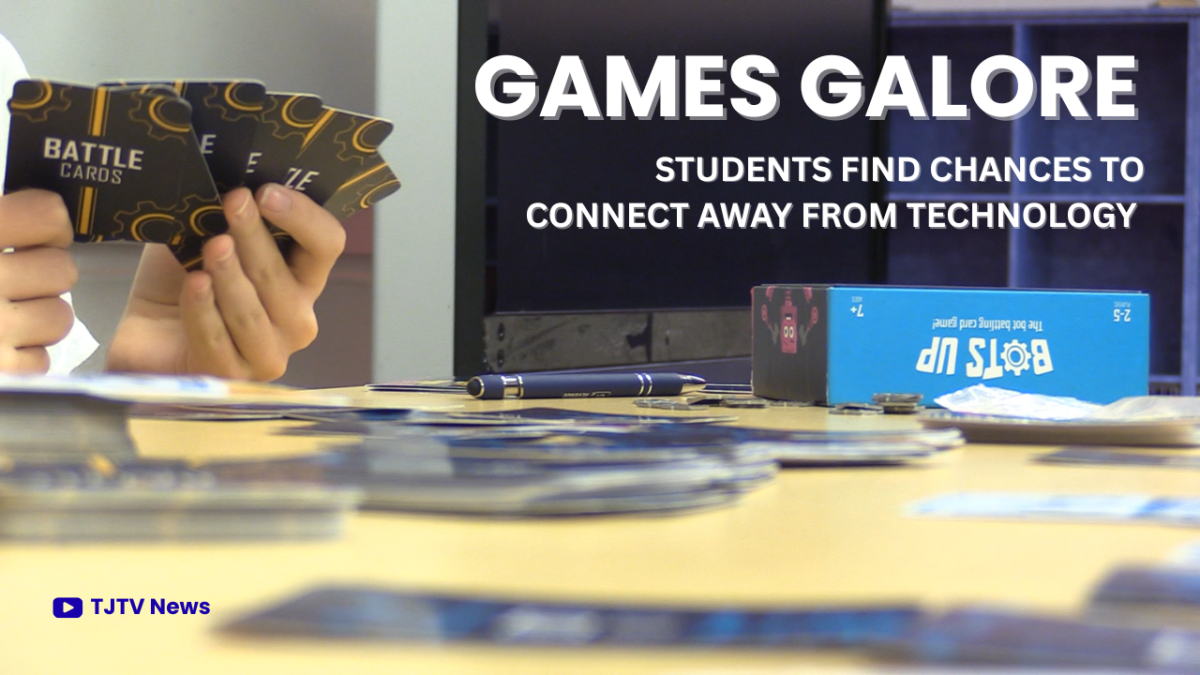
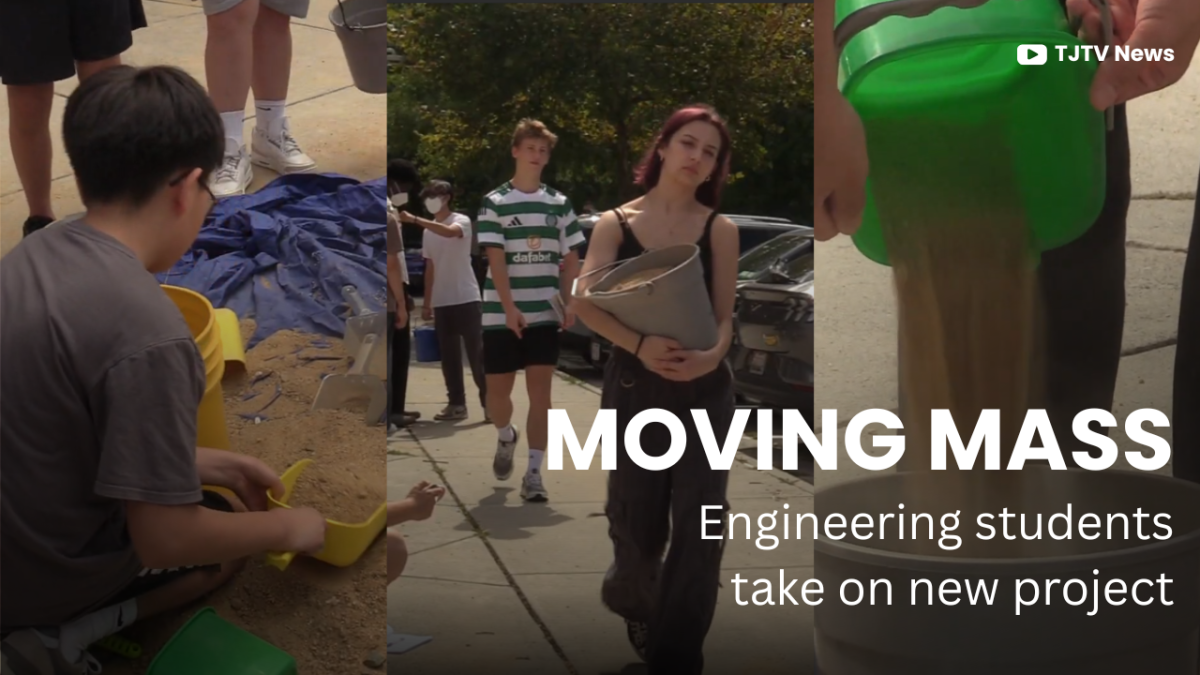
![A group of juniors play “Clash Royale” on their phones during lunch. Lunch is the only time when phones are allowed to be out. “I think once we adapt to it, it's not going to be something we miss because [for] everyone moving forward, that'll have been the policy [since] middle school,” DNA science and biology teacher Aubrie Holman said.](https://www.tjtoday.org/wp-content/uploads/2025/09/IMG_6621-2-e1758016994220-1200x958.jpeg)
![Art therapist Katherine Pedrick and senior Viola Pande pose for a picture in front of the art therapy banner at the Children’s National Hospital’s annual Sunflower Festival, where Pande distributed the art kits that she made for her Gold Award. “Art is so multifaceted,” Pande said. “Even though I'm doing physical art— and I think physical art is really therapeutic because you are painting or coloring—art can come in many different forms. I’m combining music and physical art in [my Gold Award]. Music has been a really helpful form of therapy for me throughout my high school years and throughout my life in general because I can pour my energy into something that's not school. It’s also creating something [that isn’t] physical or visual.”](https://www.tjtoday.org/wp-content/uploads/2025/09/viola-image.jpeg)

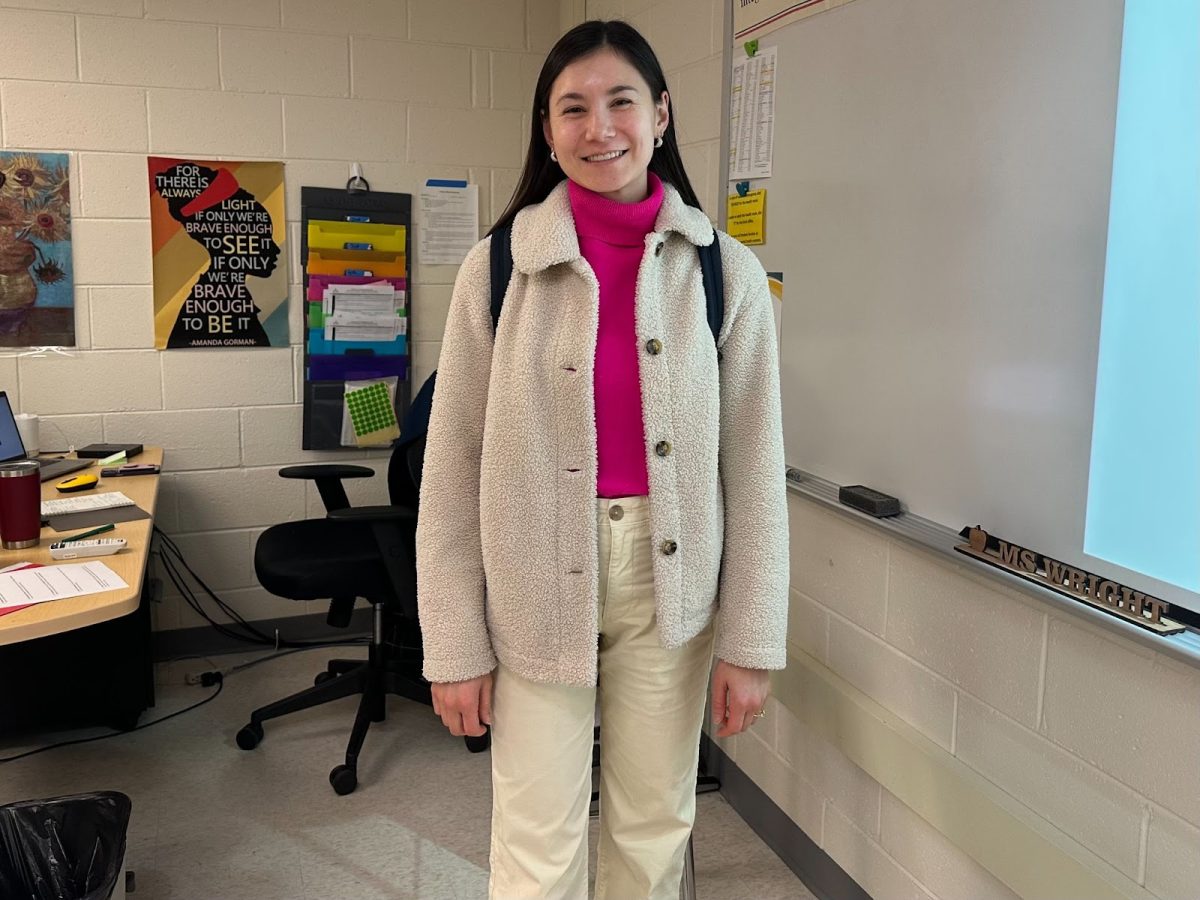
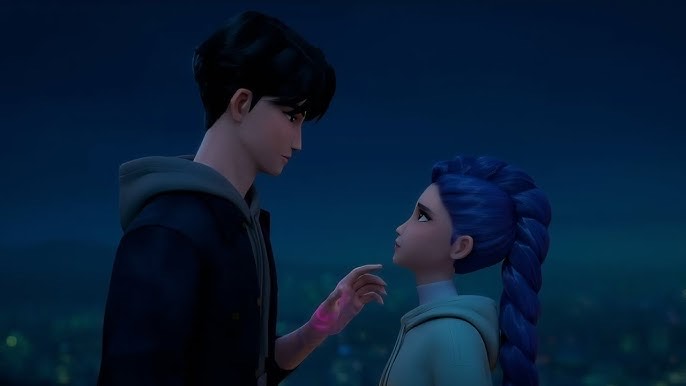
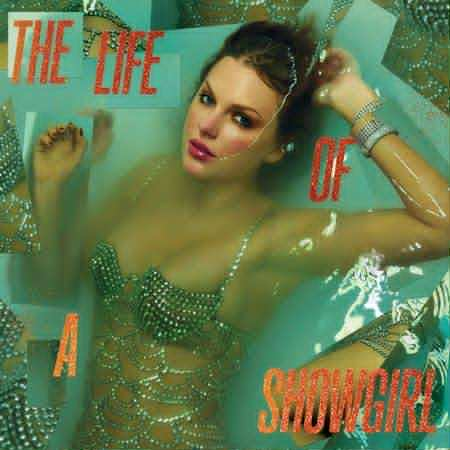
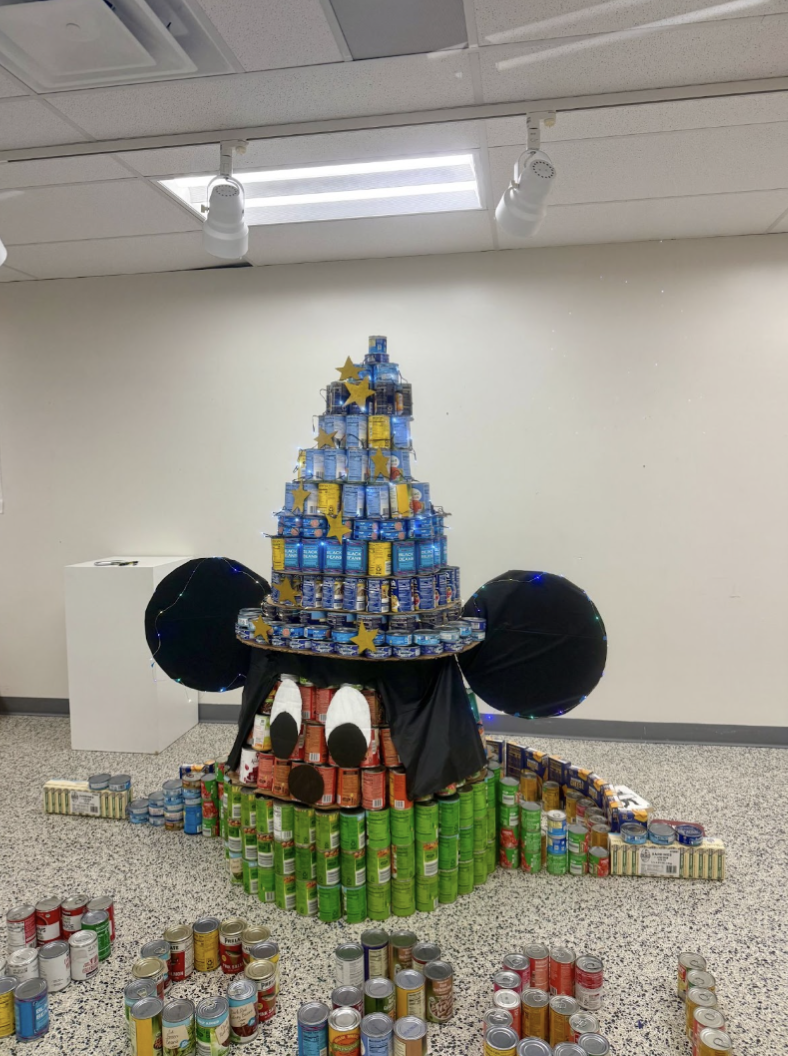
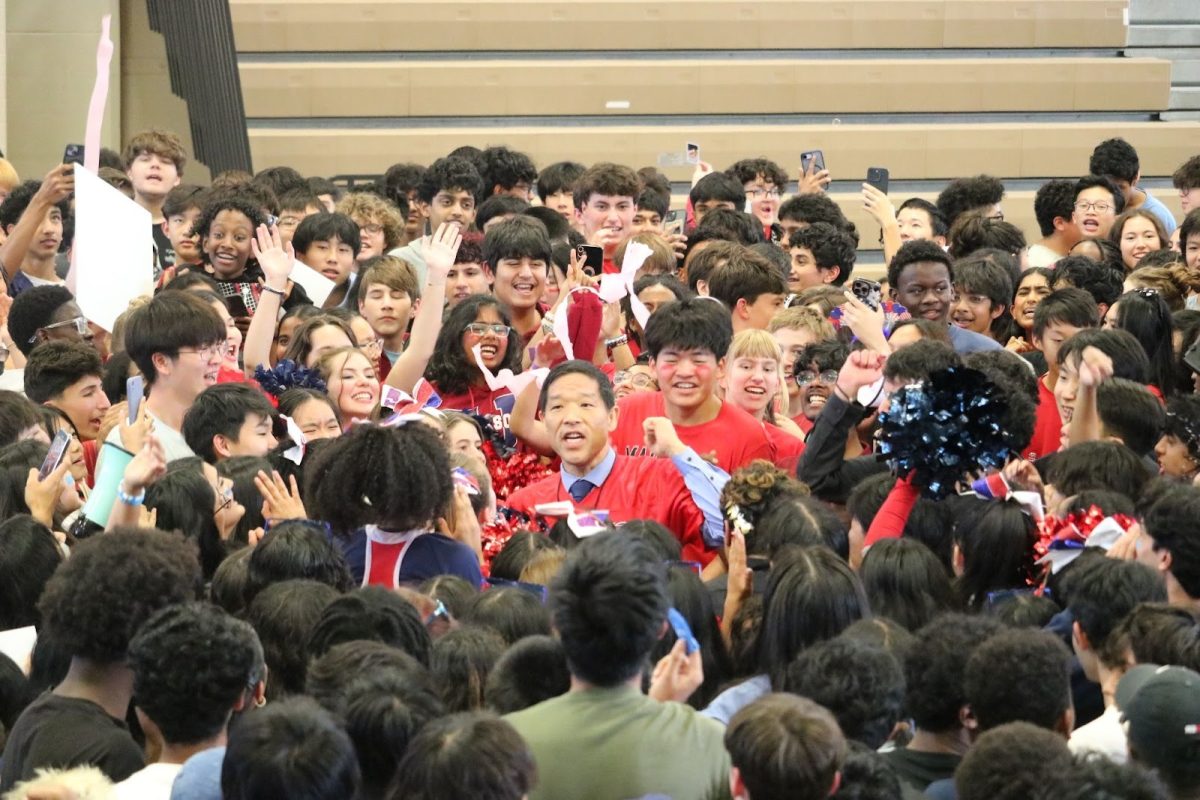

![Freshman Med Pappula cheers as he and the rest of the class of 2029 float committee accompanies their float through the parade. The class of 2026, 2027, 2028 and 2029 floats were shown off during halftime at the 2025 homecoming football game on Sept. 26. “After we finished [the float parade], [the class of 2029 float committee] celebrated,” Med said. “We felt special because we built something that [meant a lot to us] and special to our whole grade.”](https://www.tjtoday.org/wp-content/uploads/2025/09/IMG_9543-1200x800.jpg)